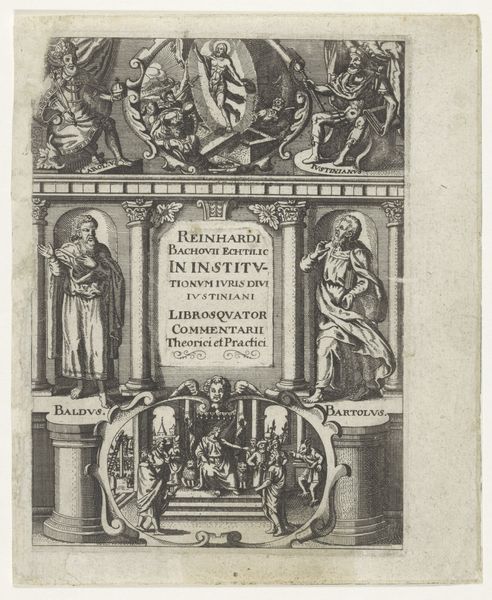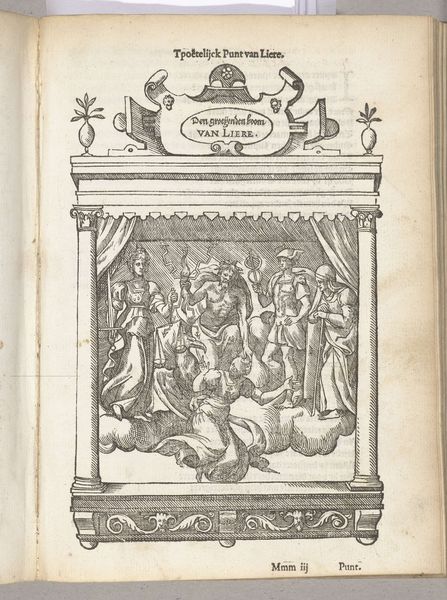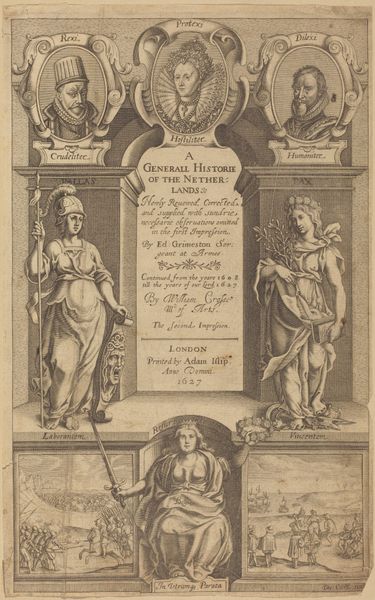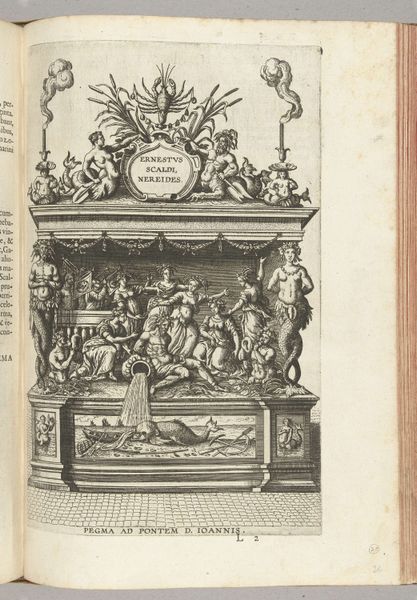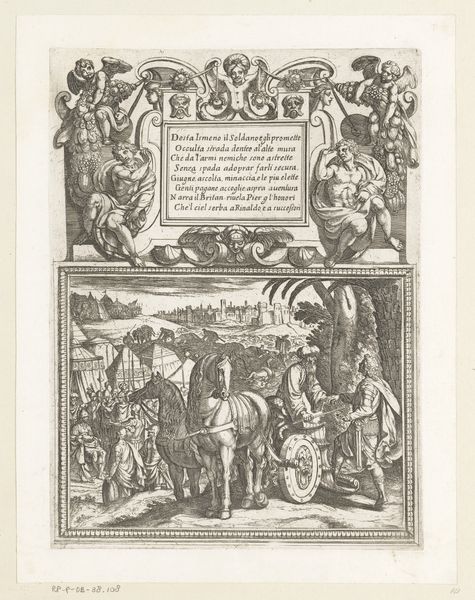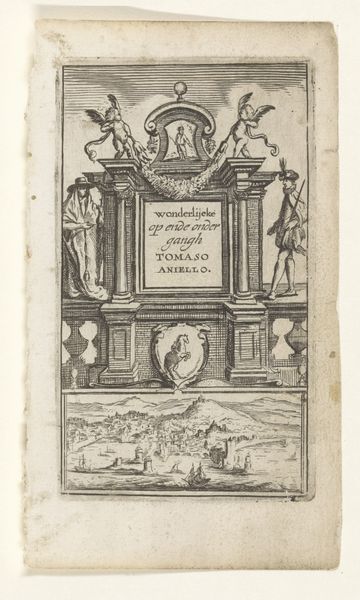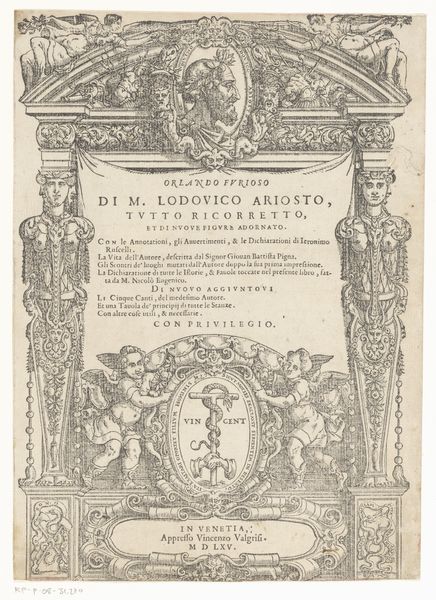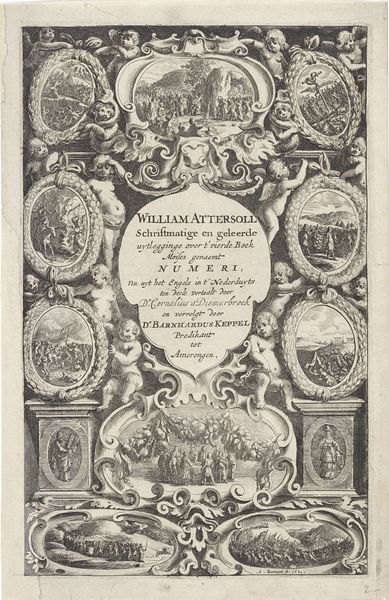
print, engraving
#
allegory
#
baroque
# print
#
history-painting
#
engraving
Dimensions: height 135 mm, width 82 mm
Copyright: Rijks Museum: Open Domain
Curator: This engraving by Frans Brun from 1637 functions as an allegorical title page, introducing a volume of Ovid's "Metamorphoses," or transformations. It's a real product of its time, baroque style and all. Editor: My first impression is one of dynamism held in check, contained within this rigidly rectangular frame. There’s a swirl of activity with those cherubs and classical figures, but it's all tightly controlled. What do you think gives it that sense of restraint? Curator: Partly it’s the historical context. We’re post-Reformation, and while the Baroque embraced exuberance, there was also a conservative element at play, especially in Protestant regions. Restraint and learnedness would certainly signal that you belong to the cultured elite. But I think, too, it has to do with the printing press itself, and engraving practices. It’s a medium that favors control, fine detail and sharply delineated forms. Editor: Definitely, that’s visible in the musculature on the figures of Minerva and Mercury. It brings a kind of embodied physicality, very rooted in specific, gendered identities and power structures. Is the suggestion here that through transformations, a change of societal standing can be found? Or are we seeing the natural world's hierarchies in full force? Curator: I see the combination. Frans Brun situates the power of transformation under these allegorical figures of wisdom and reason. Minerva's strength on the one hand, balanced by the agility and eloquence that Mercury embodied. They stand like gatekeepers before the possibilities Ovid explores within. These are social ideals being visually enforced as aspirational for the contemporary beholder. Editor: And look at that cartouche at the bottom depicting scenes from the stories. It serves as a miniature stage showcasing these narratives, literally illustrating the ‘metamorphoses.’ As an entranceway to this world of mythology, the title page acts as a crucial element of power and spectacle that serves to encourage a type of moralizing authority that might dictate where that social transformation could begin or end. Curator: I see your point. The choice of Ovid, after all, was carefully curated for the tastes and the sensitivities of Brun’s 17th-century audience. In a way, by approaching and appreciating an artist's decision-making as part of this visual and printmaking culture, we become a small part of that story as well. Editor: Exactly, this title page is so much more than just an introduction. It’s a concentrated dose of socio-cultural messaging, elegantly rendered in ink and paper, making me reconsider my relation to visual and narrative communication.
Comments
No comments
Be the first to comment and join the conversation on the ultimate creative platform.
